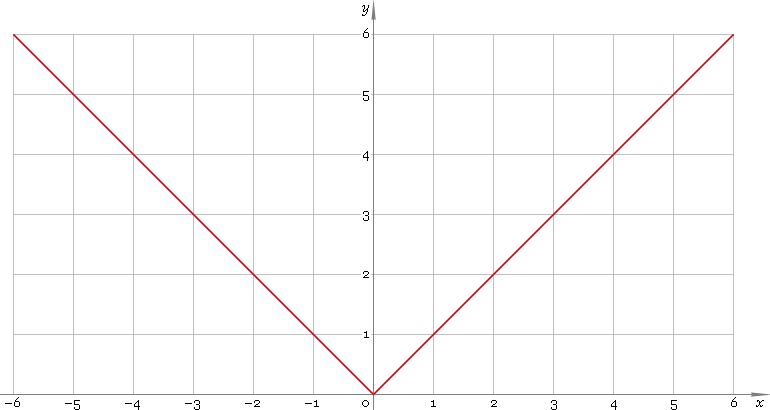| LIBROW | ® |
| Products | Solutions | Vehicles | Articles | Inquiry | Contacts | My account |
Article 11 — Appendix A.1
abs — absolute value function
Category. Mathematics.
Abstract. Absolute value: definition, plot, properties and identities.
Reference. This article is a part of Librow scientific formula calculator project.
Limited offer
Professional Librow Calculatorvisit
for free
- Bessel functions
- gamma function
- complex numbers
7.4 MB for Windows
1. Definition
Absolute value function is defined as
|x| = x for x ≥ 0;|x| = −x for x < 0.
2. Plot
Absolute value function is defined everywhere on real axis. Its plot is depicted below — fig. 1.
 Fig. 1. Plot of the absolute value function y = |x|.
Fig. 1. Plot of the absolute value function y = |x|.
Function codomain is non-negative half of the real axis: [0, +∞).
3. Identities
Function is symmetrical:
|−x| = |x|Sum and difference of arguments:
|x + y| = |x| + |y|, if signx = signy|x + y| = ||x| − |y||, if signx ≠ signy
|x − y| = ||x| − |y||, if signx = signy
|x − y| = |x| + |y|, if signx ≠ signy
Product and ratio of arguments:
|xy| = |x||y||x /y| = |x| /|y|
4. Support
Absolute value function abs of the real argument is supported by free version of the Librow calculator.
Absolute value function abs of the complex argument is supported by professional version of the Librow calculator.
5. How to use
To calculate absolute value of the number:
abs(-1);To calculate absolute value of the current result:
abs(rslt);To calculate absolute value of the number x in memory:
abs(mem[x]);
|
|||||||||||||
|
|||||||||||||

